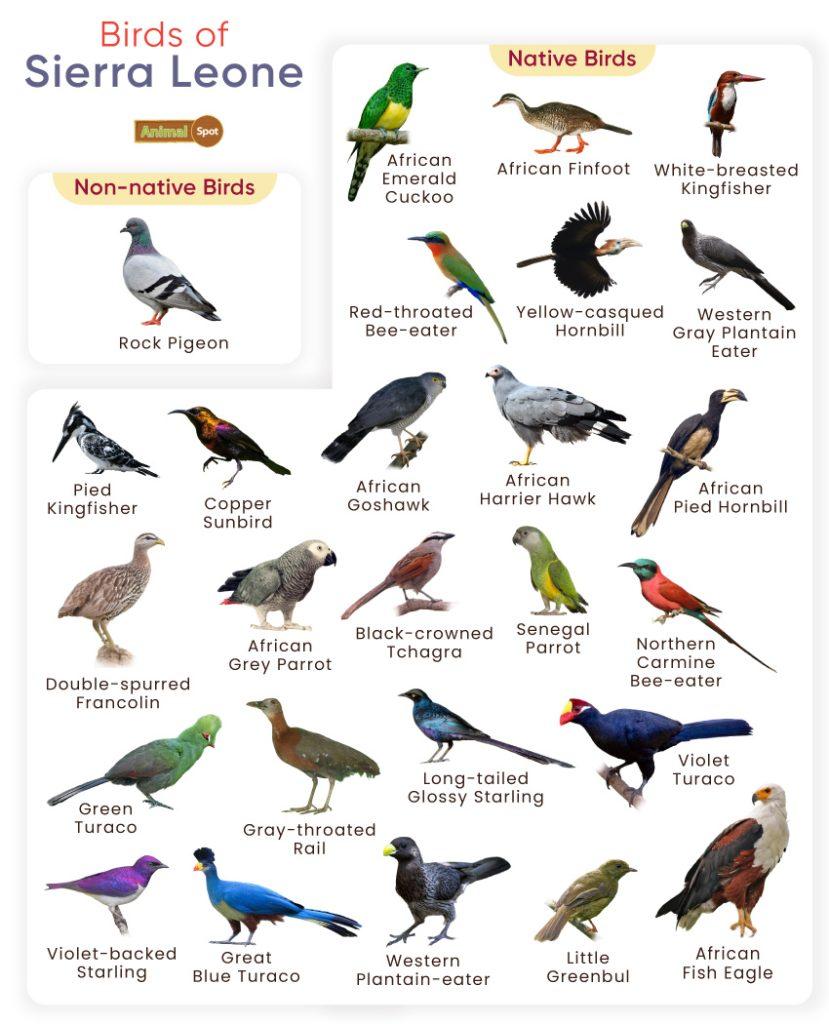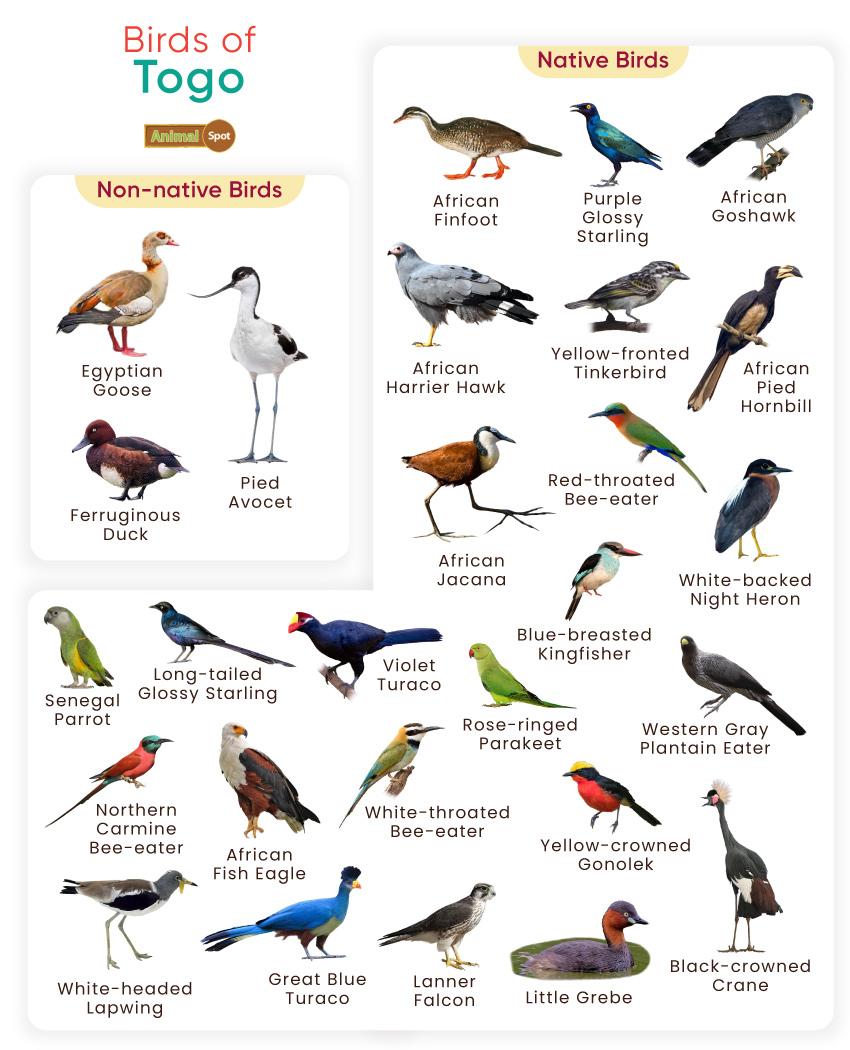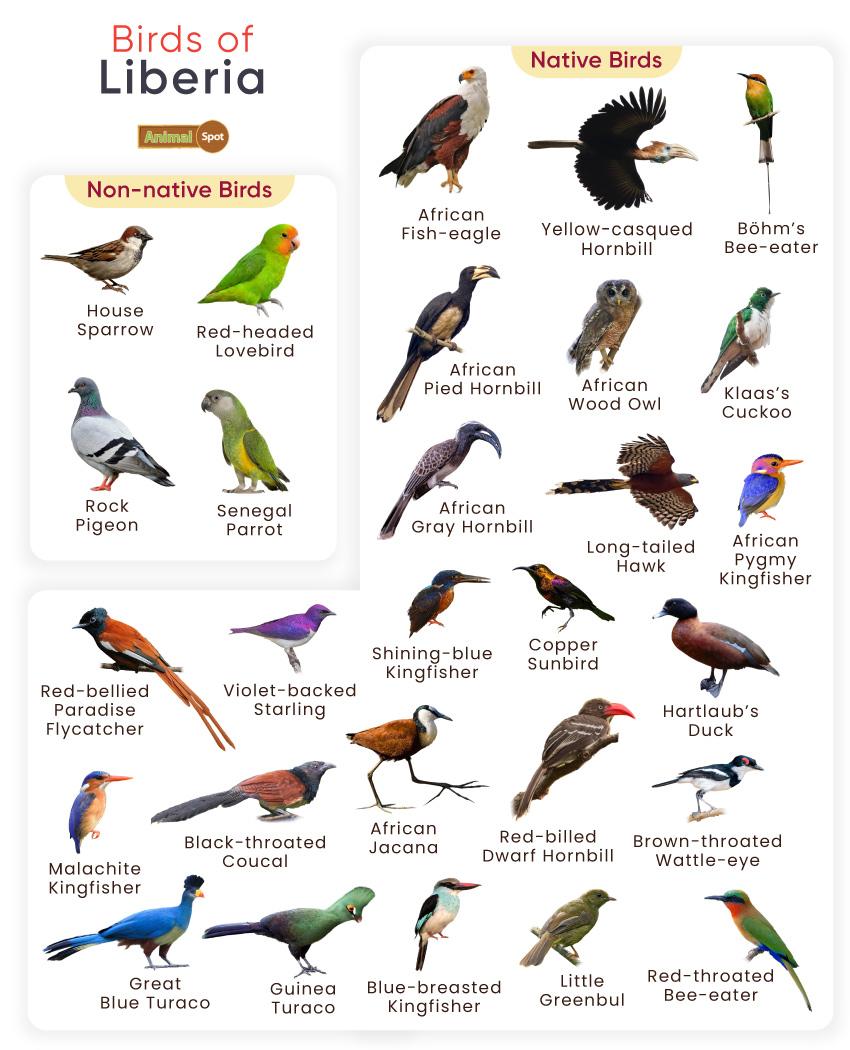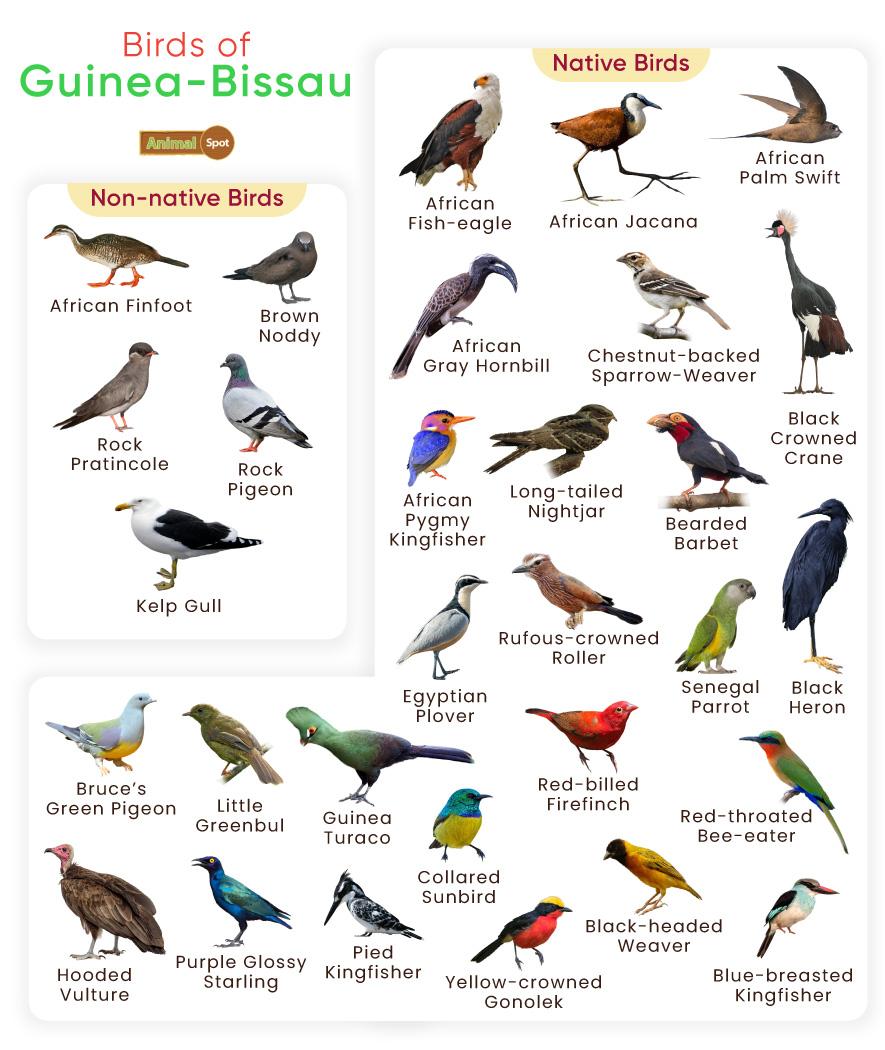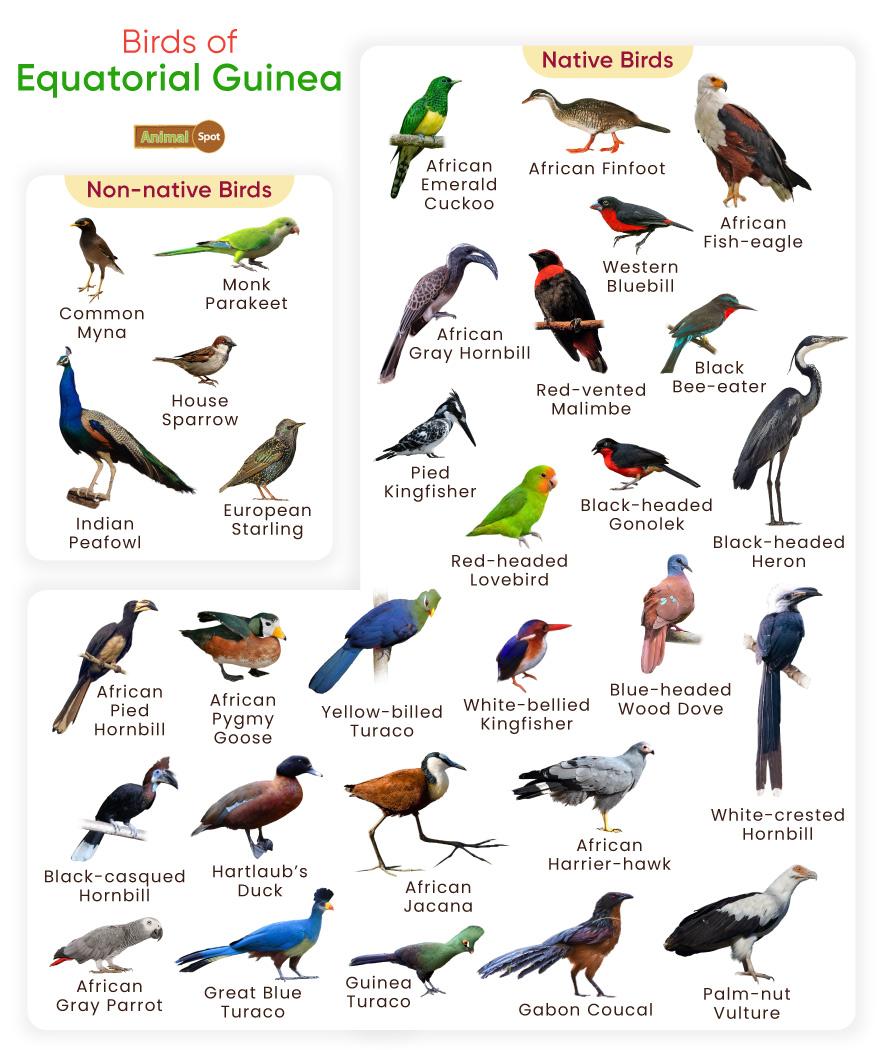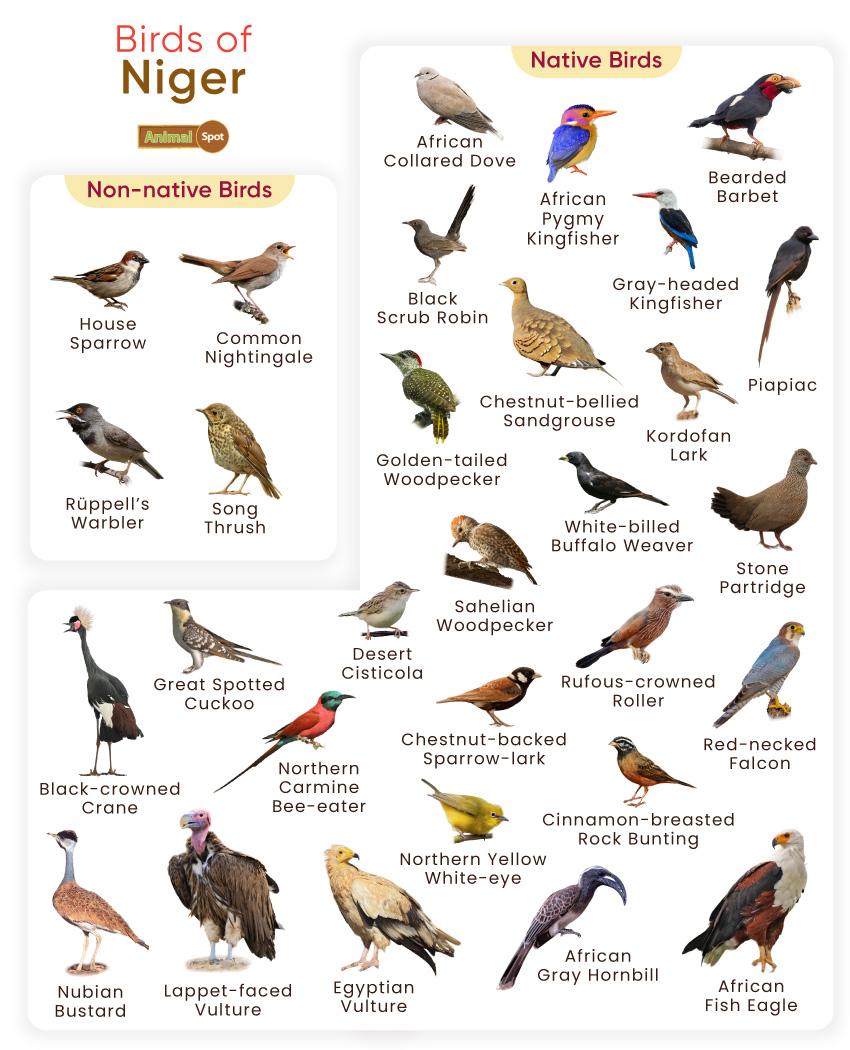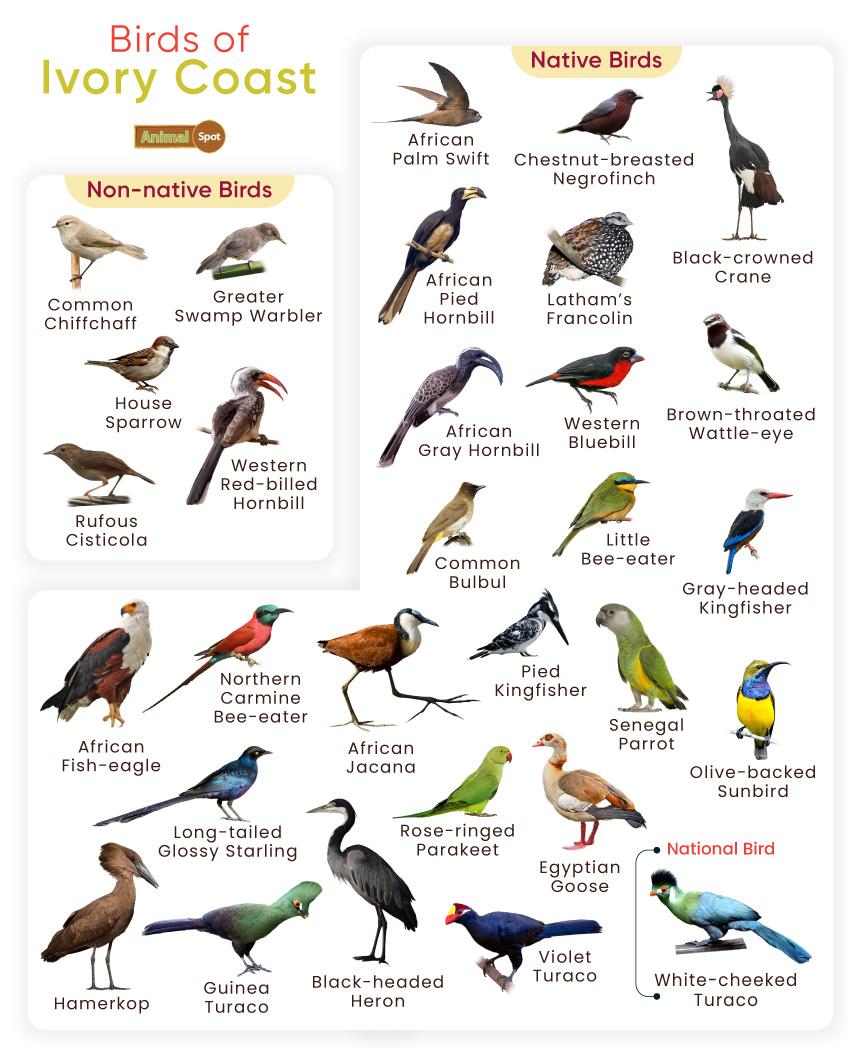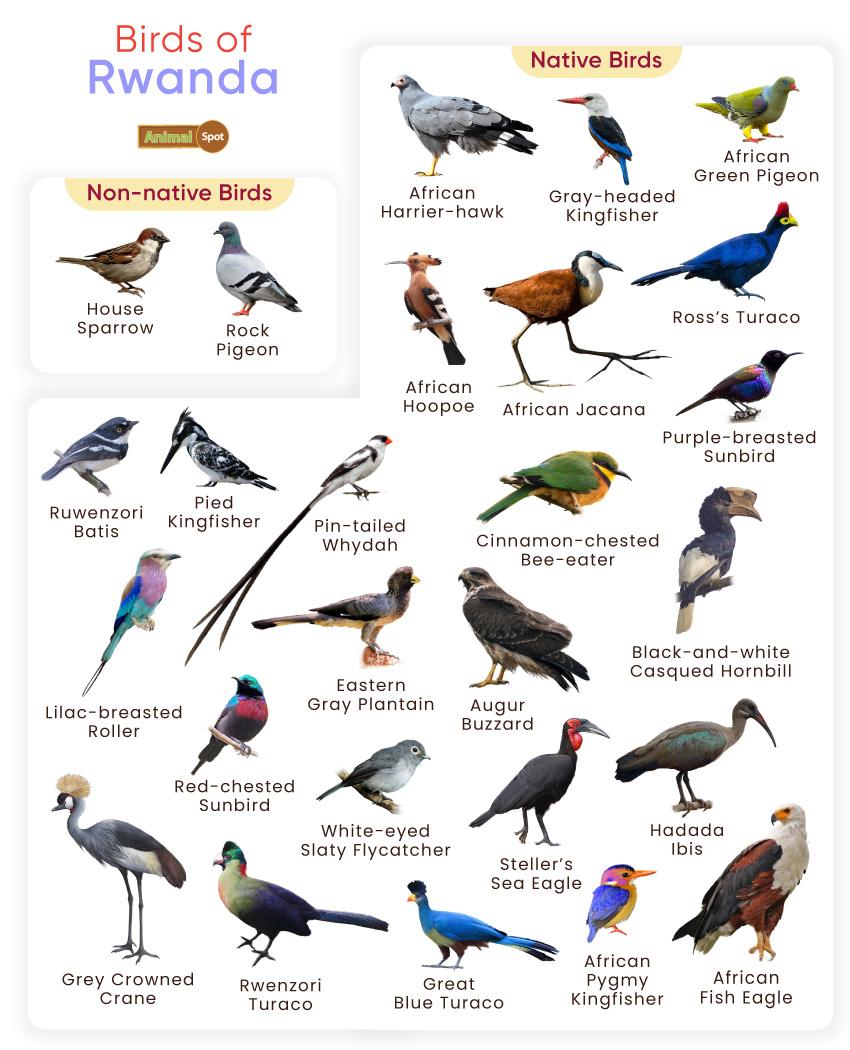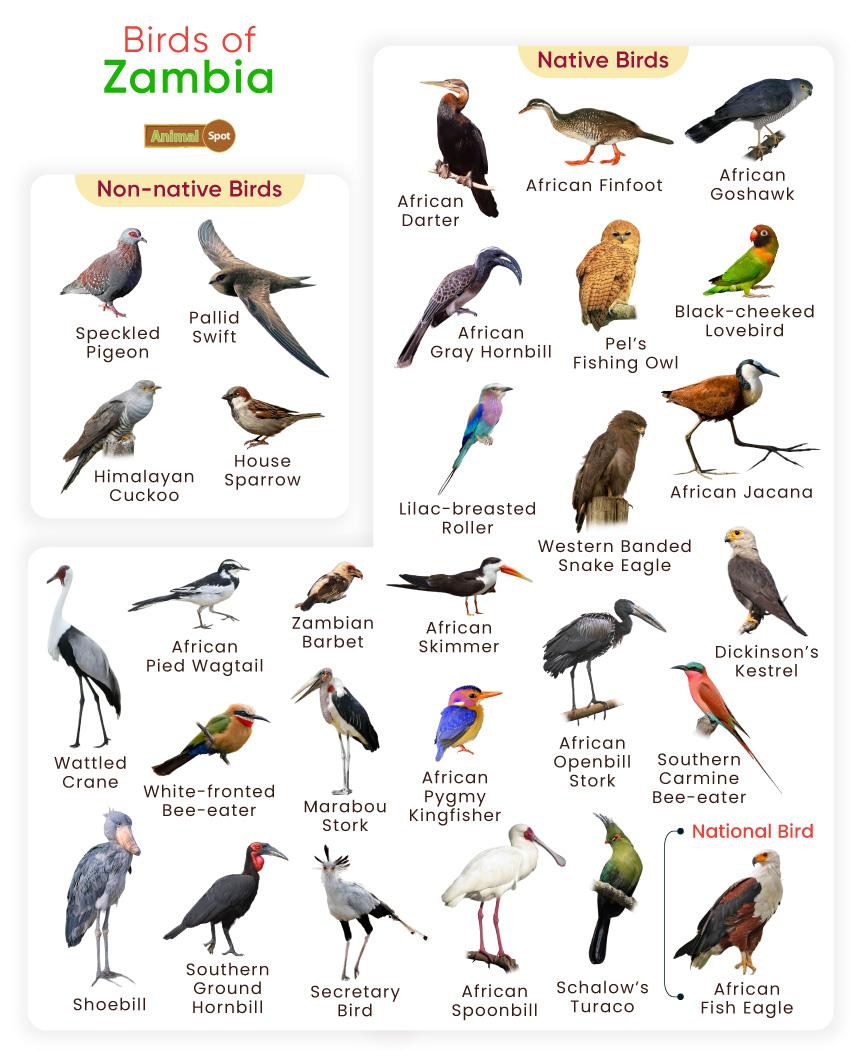Over 650 birds live in the West African nation of Sierra Leone. The country has diverse habitats, including montane forests, lowland forests, savannas, and mangroves, making it an excellent place for several avian species.
Some notable species in Sierra Leone include the African Harrier Hawk, the Green Turaco, and the Western Plantain Eater.
List of Common Birds Found in Sierra Leone
Native Birds
- African Black-headed Oriole
- African Black Swift
- African Blue Flycatcher
- African Blue Quail
- African Crowned Eagle
- African Emerald Cuckoo
- African Finfoot
- African Fish Eagle
- African Fish Owl
- African Goshawk
- African Green Broadbill
- African Green Pigeon
- African Gray Hornbill
- African Gray Parrot
- African Harrier Hawk
- African Moustached Warbler
- African Palm Swift
- African Pied Hornbill
- African Pied Wagtail
- African Pygmy Kingfisher
- African Shovel-billed Kite
- African Thrush
- African Wattled Lapwing
- African Wood Owl
- African Yellow White-eye
- Ahanta Francolin
- Black-and-white Mannikin
- Black-and-white Shrike-flycatcher
- Black Bee-eater
- Black-collared Bulbul
- Black-crowned Night Heron
- Black-crowned Tchagra
- Black Dwarf Hornbill
- Black-headed Heron
- Black-necked Weaver
- Black-shouldered Nightjar
- Black Sparrowhawk
- Black-throated Coucal
- Blue-billed Firefinch
- Blue-billed Malimbe
- Blue-breasted Kingfisher
- Blue-headed Wood Dove
- Blue-throated Roller
- Buff-spotted Woodpecker
- Cassin’s Flycatcher
- Cassin’s Hawk-eagle
- Chestnut-breasted Negrofinch
- Chestnut-capped Flycatcher
- Chestnut-winged Starling
- Common Buttonquail
- Copper Sunbird
- Double-spurred Francolin
- Dusky-blue Flycatcher
- Fanti Saw-wing
- Gola Malimbe
- Great Blue Turaco
- Great Sparrowhawk
- Great White Pelican
- Green-backed Camaroptera
- Green Hylia
- Green Turaco
- Gray-headed Broadbill
- Gray-headed Lovebird
- Gray Kestrel
- Gray-throated Rail
- Hamerkop
- Helmeted Guinea Fowl
- Hooded Vulture
- Little Bee-eater
- Little Greenbul
- Long-tailed Glossy Starling
- Long-tailed Hawk
- Maxwell’s Black Weaver
- Northern Carmine Bee-eater
- Orange-cheeked Waxbill
- Pied Crow
- Pied Kingfisher
- Pink-backed Pelican
- Pin-tailed Whydah
- Preuss’s Swallowtail
- Purple-headed Glossy Starling
- Purple-throated Cuckooshrike
- Red-bellied Paradise Flycatcher
- Red-billed Dwarf Hornbill
- Red-chested Goshawk
- Red-headed Bluebill
- Red-rumped Tinkerbird
- Red-thighed Sparrowhawk
- Red-throated Bee-eater
- Red-winged Warbler
- Ross’s Turaco
- Sabine’s Puffback
- Senegal Parrot
- Shining Drongo
- Snowy-crowned Robin-Chat
- Speckled Tinkerbird
- Square-tailed Saw-wing
- Vieillot’s Barbet
- Village Weaver
- Violet-backed Starling
- Violet Turaco
- Western Bluebill
- Western Gray Plantain Eater
- Western Nicator
- Western Oriole
- Western Plantain Eater
- Western Violet-backed Sunbird
- White-breasted Cormorant
- White-breasted Guineafowl
- White-breasted Kingfisher
- White-browed Forest Flycatcher
- White-browed Robin-chat
- White-chinned Prinia
- White-crested Helmetshrike
- White-crested Hornbill
- White-headed Lapwing
- White-necked Picathartes
- White-necked Rockfowl
- White-spotted Flufftail
- White-throated Bee Eater
- Yellow-billed Kite
- Yellow-billed Shrike
- Yellow-billed Turaco
- Yellow-browed Camaroptera
- Yellow-casqued Hornbill
- Yellow-spotted Barbet
- Yellow-throated Cuckoo
- Yellow-throated Leaflove
- Yellow-throated Tinkerbird
Non-native Birds
Some of the best birding sites in Sierra Leone include Outamba Kilimi National Park, Tiwai Island Wildlife Sanctuary, and Gola Rainforest National Park. The peak birding season in Sierra Leone is usually from November to April. During this time, the weather is more predictable, with lower chances of rainfall, making it easier to access various birding sites and observe the avian species.

